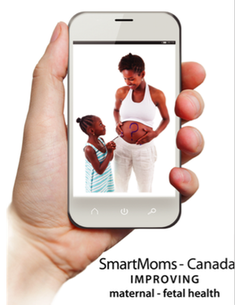Current Projects
|
1.1 PLACENTA
Thematic Goal: To determine if regular physical activity (PA) during pregnancy is associated with differences in placenta biology (e.g. gene expression of placental nutrient transport, signalling and sensing pathways, uptake and transmission of macronutrients). These signals will be manifested in the metabolome and may alter fetal growth and adiposity. The placenta is the key interface of nutrient and oxygen transport between a mother and her fetus. Preliminary evidence suggests that physical activity-induced changes in placenta biology are crucial factors aiding in optimal fetal development. Our study is the first of its kind to take a comprehensive look at the role of PA during pregnancy in regulating gene expression and metabolic function in the placenta. This represents a collaboration with multiple faculties, hospitals and universities. Progress: We have recruited ~90 participants and have collected placentas at 73 births thus far. Recruitment is on-going. This project has formed the basis for 3 MSc students and 1 PhD student thus far. Transcriptome, translatome, and microbiome work will start in 2019/20. Several manuscripts are currently in production. |
Expression and localization of VEGF, PlGF, and their receptors in term placenta of physically active and non-active women. The physiological state of pregnancy is characterized by different hemodynamic changes (i.e., ↑ resting heart rate, ↑ cardiac output, ↓peripheral vascular resistance), and dynamic changes of the vasculature of the placenta. Exercise during pregnancy has been established as a beneficial factor for maternal health and fetal development. However, the beneficial effects of exercise on the placental vasculature have not been examined in human placenta. It has been recognized that placental vascular activity and vasculature has largely been maintained by vascular endothelial growth factor (VEGF), placenta growth factor (PlGF) and their receptors, VEGFR-1, and VEGFR-2. The VEGF protein family is fundamentally involved in normal placental function by modulating vascular growth. We aim to identify how PA during pregnancy influences the placental VEGF protein family. Progress: We have recruited participants and collected placenta from 19 highly physically active and 17 non-active women. The expression and localization of VEGF, PlGF, VEGFR-1 and VEGFR-2 in physically active and non-active women’s placenta tissue have been analyzed by WB and/or IHC. RNA has been isolated from all samples. We are currently analyzing the mRNA profile of VEGF family proteins in highly active and non-active women’s placenta (manuscript under preparation for Biology of Reproduction).
Exploring the effect of maternal PA and region on placental mitochondrial content and function. The mitochondria serve as the major site for energy metabolism in mammalian cell types, the placenta being no exception. Oxidative phosphorylation involves the transfer of high-energy electrons through a set of protein complexes, creating an electrical potential catalyzing the production of the high energy molecule, ATP. Exercise positively impacts mitochondria in skeletal muscles, promoting increase function and biogenesis. As the mitochondrial number and function increase, the cells can increase their energy production and fatty acid metabolism. Fatty acids, more specifically triglycerides, are oxidized to create electron donor molecules NADH and FADH2, which are used by the mitochondria to produce energy. It is known that maternal obesity results in the decrease of placental mitochondrial number and function, as well as reduced fatty acid oxidation. We do not know whether or not increased maternal activity would result in increased fatty acid oxidation. It has been suggested that there are variations in maternal blood flow to different regions of the placenta, prompting the question of whether or not there is a difference in function and development. Progress: The mitochondrial protein content and function in the peripheral and central location of the placenta has been analyzed in both active and inactive woman, and a manuscript is being prepared. We are currently exploring whether or not placental fatty acid metabolism is affected by placental location or maternal PA.
Microbiome. This sub-study aims to explore the impact PA has on the maternal and fetal microbiome. This interest stems from reports showing that i) the gut microbiome of all women undergoes dramatic compositional changes during pregnancy, ii) the gut microbiota of overweight vs. normal weight pregnant women are distinct such that overweight women have higher proportion of Bacteroides and Staphylococcus whilst normal weight women have more Bifidobacterium bacteria, and iii) epidemiological studies highlighting associations between infant gut microbiota, infant weight gain, and later onset of childhood obesity. These studies discussed several external factors (i.e.: breast milk and antibiotics) that may modify infant gut microbiota and how interventions may allow us to manipulate the infant’s gut microbiota to prevent obesity. Currently, it is unclear if maternal PA or possible differences in weight status (i.e., normal weight/overweight) differently impact the microbiome of the newborn. Knowing that PA is a critical mediator of weight maintenance at all ages, as well as a predictor of maternal obesity and excessive gestational weight gain, we predict that there is also a relationship between PA and the maternal and fetal microbiome. Participants visit our lab every trimester and following each visit, participants are given an Actical accelerometer to measure their PA level over 7 days, a 3-day dietary record log, and DNA Genotek’s OMNIgene GUT kit for stool sample collection. One to two days after birth, the newborn's body composition are measured, and mothers are given two OMNIgene GUT kits to collect stool from themselves and the baby seven days after birth. Our goal is to compare women who are active vs. inactive during pregnancy. We wish to determine: (1) if the microbiome changes between trimesters is consistent with the current literature, (2) how the mother’s microbiome changes post-birth, (3) if the infant’s microbiome is similar to the mother’s (is it inherited), and (4) if the mother or newborn’s microbiome is altered by PA or dietary habits. Research in obesity has reported that individuals who have low bacterial richness also present with low-grade inflammation, insulin resistance, dyslipidemia and overall adiposity - characteristics of obesity-related co-morbidities. Similarly, our thorough sampling strategy will also allow us to examine microbiome associations with the mother’s immune profile, metabolomic profile, placental transcriptomics/proteomics, diet record, medication use, depression score, and infant anthropometric measures - making it possible to consult the current literature and generate new hypotheses for determining the mechanisms by which PA effects maternal/fetal microbiome, and if these changes can have a lasting impact on the child’s health. The Intergenerational Cycle of Obesity is a clearly observable phenomena where childhood obesity is linked to maternal obesity and excessive gestational weight gain. It has been established that the maternal metabolic state can alter the intrauterine environment in such a way that affects the life-time metabolic fitness of the offspring. Despite the lack of literature on gut microbiome and PA during pregnancy, we are eager to explore this possible relationship due to accumulating evidence showing that both are critically linked to immune and metabolic homeostasis regulation - two systems typically dysregulated in obesity related co-morbidities. This study has the potential to reveal novel causative factors of metabolic diseases and given the gut microbiome’s easily observable and influenceable nature, it would make an ideal system to develop new strategies for predicting risk and preventing lifestyle-related diseases.
The systemic and localized polarization of immune cells during pregnancy and its relationship to maternal PA. There are many psychological and physiological changes during pregnancy that promote low levels of PA; in fact, studies have estimated only 15% of pregnant women meet the minimum recommendations of 150 minutes of moderate-intensity PA per week (Evenson & Wen, 2010). This puts women and their fetuses at risk for multiple health problems (Downs et al. 2013), as well as negatively affecting the intrauterine environment (Badon et al. 2013). Fitness derived from regular PA has been known to lower concentrations of circulating pro-inflammatory cytokines, and increase levels of circulating anti-inflammatory cytokines (Windsor et al. 2018). Hofbauer cells, a placenta-resident macrophage of fetal origin, have often been overlooked while studying reproductive immunology. Hofbauer cells and other macrophages have been shown to have mature functional states associated with both regulatory and pro-inflammatory functions. They are thought to play a crucial role in the regulation of pregnancy and in the maintenance of a homeostatic environment. Hofbauer cell polarization towards a pro-inflammatory activation has been associated with many detrimental conditions, including maternal gestational diabetes and preeclampsia (Zulu et al. 2018). Other peripheral and tissue-resident macrophages have been found to favour polarization towards a regulatory state with regular exercise, which in turn attenuates the development of inflammatory diseases (Silveria et al. 2016). It is currently unclear whether maternal exercise influences the polarization of Hofbauer cells, and the effect that in turn will have on the developing fetus. This project aims to examine the effect of regular exercise on the polarization of placenta tissue-resident macrophages and levels of inflammation in peripheral blood.
Metabolomics is the systematic study of small molecules that utilizes the byproducts of cellular metabolism to construct a phenotypic fingerprint of a biological system (Walejko, 2018). During normal healthy pregnancy, the body undergoes drastic metabolic changes to ensure the energy needs of the developing fetus and mother are met (Rauschert, 2017). Normal pregnancy, therefore, has a unique metabolomic signature. Deviations from this distinct signature can indicate the presence of a pre-existing or developing disorder. Therefore, metabolomic profiling during pregnancy has shown to be a promising tool in monitoring the changes in obstetric conditions and can be valuable in the early diagnosis and intervention of metabolic diseases. While metabolomics has been used in pregnancy studies, maternal metabolomics profiles, and their effect on child health outcomes has yet to be examined. For example, maternal obesity is thought to be communicated to the developing fetus in utero via serum metabolome, thereby altering the child’s metabolic profile to one garnering obesity-risk. Whether maternal PA during pregnancy can serve as a therapeutic intervention to counteract the observed changes of the metabolomics profiles of the mother and child remains to be investigated. Our aim is to characterize the metabolome of physically active and inactive mothers during pregnancy and record the downstream effects on the child. Overreaching aim: Characterize the metabolome across pregnancy in women who are habitually physically active vs. inactive and the associated cord blood metabolome. Aim 1: Characterize the metabolome across pregnancy in women who are habitually physically active vs. inactive and cord blood metabolome. Aim 2: Characterize placental metabolome in active vs. inactive mothers.
Placenta transcriptomic profiling: To determine differences in gene set expression profiles in the placentas of women who are habitually physically active over the course of their pregnancy when compared with those who are not. Specifically, do the angiogenic, oxidative stress, nutrient sensing and nutrient transport pathway gene set expression patterns differ? The research community has put considerable effort into examining the effects of smoking, drug use, alcohol, and various disease states on placental-fetal biology but has largely ignored PA, a behaviour strongly associated with global disease risk reduction and the single strongest predictor of all-cause mortality. Exercise molecular biologists have identified adaptive responses in virtually every human tissue, with the exception of the placenta. As such, the overarching goal of this study was to gain the first insights as to the molecular mechanisms through which maternal PA may placenta physiology. As a first step towards attaining this goal, we aimed to determine if the placenta itself may be influenced by maternal PA by identifying biologically relevant mechanistic pathways that are different between active and inactive women. Using next generation sequencing (NGS) in partnership with our StemCore facilities (Ottawa Hospital Research Institute, Ottawa ON), the primary aim of analysis is to identify common, overlapping, and differentially regulated physiological pathways between active and inactive groups. We anticipate that PA will significantly alter gene sets related to cell cycle regulation, angiongenesis/vasculogenesis, hypoxia, oxidative stress/anitioxidant signalling, nutrient sensing and nutrient transport and could provide novel insights as to how maternal PA influences placental development.
This Project is funded by CIHR Operating grant 2015-2020 - Does maternal phsyical activity affect placental biology? A multi-tiered approach.
1.2 CHARACTERIZATION OF PLACENTA DYNAMICS AND RESPONSE TO VARIOUS METABOLIC EXPOSURES
Our team is interested in the impact of maternal energy expenditure on fundamental aspects of placenta biology. We hypothesize that the increases in energy expenditure that accompany exercise result in changes within the placenta related to vascular development and reactivity, substrate metabolism, and mitochondrial form and function. The specific mechanisms underlying the optimized development and function of the placenta remain unknown.
Sub-study 1: Myokine Study (collaborative work with Drs. Shannon Bainbridge and Celine Aguer). Myokines are small peptides released by skeletal muscle most often as a result of contraction. They have been identified as important mediators to the benefits of exercise as they are involved in muscle to organ cross-talk. We aim to identify whether or not these myokines are one of the factors contributing to the beneficial action of PA during pregnancy. Progress: We recruited and completed pre- and post-exercise serum collection for 13 pregnant and 17 non-pregnant women following a walking treadmill bout at moderate-intensity. The myokine profile was analyzed and compared within and between groups. (preliminary manuscript is in press at Frontiers in Physiology). We are currently investigating whether post-exercise serum alters nutrient transporter expression and localization, cellular proliferation, and cellular viability.
Sub-study 2: The role of exercise-induced extracellular vesicles in placental vascularity. In addition to myokines, we are examining the relationship between extracellular vesicles (EVs), released by contracting skeletal muscle during exercise, on the growth and development of the placental vasculature. Progress: We have successfully isolated EVs and are working on treatments using in vitro models of placenta development and angiogenesis.
Sub-study 3: Heart rate variability as a marker of autonomic cardiac function in pregnant women. As pregnancy advances, an increase in physiological stress is observed, which alters cardiac autonomic regulation. Usually, the parasympathetic nervous system activity is blunted. Resting heart rate variability (rHRV) is considered an important marker of autonomic nervous system activity, and my team was interested in analyzing if a shorter rHRV measurement period could be applied thereby increasing the practicality of this measure in different pregnancy-related settings. Progress: We found that this index can be assessed for 5 minutes in pregnant women with a reliable physiological interpretation compared to the measurement criterion, which increases its practical application of rHRV in exercise training guidance, stress/anxiety management, and other research settings. Our preliminary paper is in press with APNM), and we are continuing to examine other aspects.
This Project is funded by NSERC Grant 2017-2022 - Characterization of placenta dynamics and response to various metabolic exposures.
Our team is interested in the impact of maternal energy expenditure on fundamental aspects of placenta biology. We hypothesize that the increases in energy expenditure that accompany exercise result in changes within the placenta related to vascular development and reactivity, substrate metabolism, and mitochondrial form and function. The specific mechanisms underlying the optimized development and function of the placenta remain unknown.
Sub-study 1: Myokine Study (collaborative work with Drs. Shannon Bainbridge and Celine Aguer). Myokines are small peptides released by skeletal muscle most often as a result of contraction. They have been identified as important mediators to the benefits of exercise as they are involved in muscle to organ cross-talk. We aim to identify whether or not these myokines are one of the factors contributing to the beneficial action of PA during pregnancy. Progress: We recruited and completed pre- and post-exercise serum collection for 13 pregnant and 17 non-pregnant women following a walking treadmill bout at moderate-intensity. The myokine profile was analyzed and compared within and between groups. (preliminary manuscript is in press at Frontiers in Physiology). We are currently investigating whether post-exercise serum alters nutrient transporter expression and localization, cellular proliferation, and cellular viability.
Sub-study 2: The role of exercise-induced extracellular vesicles in placental vascularity. In addition to myokines, we are examining the relationship between extracellular vesicles (EVs), released by contracting skeletal muscle during exercise, on the growth and development of the placental vasculature. Progress: We have successfully isolated EVs and are working on treatments using in vitro models of placenta development and angiogenesis.
Sub-study 3: Heart rate variability as a marker of autonomic cardiac function in pregnant women. As pregnancy advances, an increase in physiological stress is observed, which alters cardiac autonomic regulation. Usually, the parasympathetic nervous system activity is blunted. Resting heart rate variability (rHRV) is considered an important marker of autonomic nervous system activity, and my team was interested in analyzing if a shorter rHRV measurement period could be applied thereby increasing the practicality of this measure in different pregnancy-related settings. Progress: We found that this index can be assessed for 5 minutes in pregnant women with a reliable physiological interpretation compared to the measurement criterion, which increases its practical application of rHRV in exercise training guidance, stress/anxiety management, and other research settings. Our preliminary paper is in press with APNM), and we are continuing to examine other aspects.
This Project is funded by NSERC Grant 2017-2022 - Characterization of placenta dynamics and response to various metabolic exposures.

2. SmartMoms-Canada
Over 60% of Canadian women exceed the evidence-based gestational weight gain (GWG) guidelines. This can exacerbate a woman’s lifelong struggle with weight, contributing to the intergenerational cycle of obesity. A response to this gap in care during this critical period is vital. SmartMoms-Canada, a pregnancy-focused mHealth lifestyle intervention program. Pregnant women today are requesting personalized health information support to assist them in staying within their GWG targets and are receptive to novel approaches to health care. In fact, 96% of women indicate an interest in receiving guidance on prenatal care through their phone. The primary objective is to determine if the SmartMoms-Canada app-based lifestyle modification program results in a clinically significant reduction in eGWG vs. standard care. Secondary objectives include infant growth trajectory, postpartum weight retention, antenatal complications, lifestyle behaviours, quality of life, depression/mood, and program adherence. Deliverable: If SmartMoms-Canada is found to be an effective adjunct to standard care, our goal is to integrate this mHealth model into regular prenatal care.
Click here to view some of the key features included in the SmartMoms-Canada app, or view the video posted below.
This Project is funded by CIHR Operating Grant for SmartMoms Canada: An evaluation of a mobile app intervention to support a healthy pregnancy
Over 60% of Canadian women exceed the evidence-based gestational weight gain (GWG) guidelines. This can exacerbate a woman’s lifelong struggle with weight, contributing to the intergenerational cycle of obesity. A response to this gap in care during this critical period is vital. SmartMoms-Canada, a pregnancy-focused mHealth lifestyle intervention program. Pregnant women today are requesting personalized health information support to assist them in staying within their GWG targets and are receptive to novel approaches to health care. In fact, 96% of women indicate an interest in receiving guidance on prenatal care through their phone. The primary objective is to determine if the SmartMoms-Canada app-based lifestyle modification program results in a clinically significant reduction in eGWG vs. standard care. Secondary objectives include infant growth trajectory, postpartum weight retention, antenatal complications, lifestyle behaviours, quality of life, depression/mood, and program adherence. Deliverable: If SmartMoms-Canada is found to be an effective adjunct to standard care, our goal is to integrate this mHealth model into regular prenatal care.
Click here to view some of the key features included in the SmartMoms-Canada app, or view the video posted below.
This Project is funded by CIHR Operating Grant for SmartMoms Canada: An evaluation of a mobile app intervention to support a healthy pregnancy
3. Addressing Weight stigma in prenatal healthcare: developing patient-informed recommendations (funder MITACS)
Obesity Canada and the World Health Organization (WHO) define weight stigma as having negative attitudes or perceptions towards an individual due to their weight, causing unfair treatment and inequity (Obesity Canada 2019; WHO, 2017). Weight stigma experienced in healthcare settings, increases depression and anxiety and decreases the likelihood for participating in lifestyle recommendations including PA (Brewis et al., 2018; Emmer et al., 2019). A unique population at risk for potentially experiencing weight stigma in healthcare, are pregnant women with a pre-pregnancy body mass index (BMI) ≥35.0kg/m2 (Class II and III obesity). Limited research with small samples has reported that pregnant women with obesity report feelings of shame and guilt during prenatal care (Mulherin et al., 2013; Lauridsen et al., 2016). Additionally, the recent Canadian Physical Activity Guidelines throughout Pregnancy found that exercisers will have a 67% decreased risk for prenatal depression however interventions have not been designed and tested for women with Class III obesity (Davenport et al., 2018). The overall goal of this research will be to take a patient-centred approach to measure weight stigma in prenatal care and the effect on prenatal depression risk and adherence to PA recommendations, with the goal of informing healthcare providers and researchers to eliminate weight stigma. We will be measuring weight stigma using a validated psychometric tool, Weight Stigma Questionnaire (Lillis et al., 2011). As well, taking a mixed methods approach including both interviews and questionnaires, we will measure and report the effect of weight stigma on prenatal depression risk and PA participation. Participants will also share their recommendations for improving prenatal healthcare and PA programming.
Obesity Canada and the World Health Organization (WHO) define weight stigma as having negative attitudes or perceptions towards an individual due to their weight, causing unfair treatment and inequity (Obesity Canada 2019; WHO, 2017). Weight stigma experienced in healthcare settings, increases depression and anxiety and decreases the likelihood for participating in lifestyle recommendations including PA (Brewis et al., 2018; Emmer et al., 2019). A unique population at risk for potentially experiencing weight stigma in healthcare, are pregnant women with a pre-pregnancy body mass index (BMI) ≥35.0kg/m2 (Class II and III obesity). Limited research with small samples has reported that pregnant women with obesity report feelings of shame and guilt during prenatal care (Mulherin et al., 2013; Lauridsen et al., 2016). Additionally, the recent Canadian Physical Activity Guidelines throughout Pregnancy found that exercisers will have a 67% decreased risk for prenatal depression however interventions have not been designed and tested for women with Class III obesity (Davenport et al., 2018). The overall goal of this research will be to take a patient-centred approach to measure weight stigma in prenatal care and the effect on prenatal depression risk and adherence to PA recommendations, with the goal of informing healthcare providers and researchers to eliminate weight stigma. We will be measuring weight stigma using a validated psychometric tool, Weight Stigma Questionnaire (Lillis et al., 2011). As well, taking a mixed methods approach including both interviews and questionnaires, we will measure and report the effect of weight stigma on prenatal depression risk and PA participation. Participants will also share their recommendations for improving prenatal healthcare and PA programming.
4. IDEaS (Phase 1b)
A multi-stage approach to addressing sex-disparities in musculoskeletal injuries in military members
Identifying and recruiting women with high capacity for future success is an essential goal for the Canadian Armed Forces (CAF). Musculoskeletal injury (MSKi) is the primary reason for medical discharge and downgrade and the most common reason for non-deployment throughout the militaries of the world. Clear understanding of why women experience higher rates of MSKi compared to their male peers is a necessity for reducing disparities. Preliminary evidence gathered during phase 1a illustrates a need for further physiological characterization to inform future intervetion or policy development to protect women from undue MSKi risk and prevent premature career withdrawal. We purpose an intertwining 3-tiered approach progressing toward our long-term goal of developing custom mitigation strategies/interventions for at-risk women.
Aim 1: Addressing sex-disparities in musculoskeletal injuries, reproductive health, and barriers to recruitment and retention in the CAF;
Aim 2: Environmental Scan addressing real and perceived barriers;
Aim 3: In-depth biological characterization of susceptible 'at risk' and resistant 'protected' CAF women.
This project was funded by the Innovation for Defence Excellence and Security (IDEaS) in the Department of National Defence (DND).
A multi-stage approach to addressing sex-disparities in musculoskeletal injuries in military members
Identifying and recruiting women with high capacity for future success is an essential goal for the Canadian Armed Forces (CAF). Musculoskeletal injury (MSKi) is the primary reason for medical discharge and downgrade and the most common reason for non-deployment throughout the militaries of the world. Clear understanding of why women experience higher rates of MSKi compared to their male peers is a necessity for reducing disparities. Preliminary evidence gathered during phase 1a illustrates a need for further physiological characterization to inform future intervetion or policy development to protect women from undue MSKi risk and prevent premature career withdrawal. We purpose an intertwining 3-tiered approach progressing toward our long-term goal of developing custom mitigation strategies/interventions for at-risk women.
Aim 1: Addressing sex-disparities in musculoskeletal injuries, reproductive health, and barriers to recruitment and retention in the CAF;
Aim 2: Environmental Scan addressing real and perceived barriers;
Aim 3: In-depth biological characterization of susceptible 'at risk' and resistant 'protected' CAF women.
This project was funded by the Innovation for Defence Excellence and Security (IDEaS) in the Department of National Defence (DND).
Collaborative Projects
1. Supporting Healthy AcTive CHildcare settings (HATCH) (funder: CIHR); PI: Valerie Carson, University of Alberta
Summary: The promotion of regular PA and minimal SB in childcare centres can improve health outcomes in a large proportion of Canadian early years children, given over 50% attend non-parental care. In December 2013, the Alberta government introduced new accreditation standards for childcare settings to be phased in until 2019 that include a new PA and SB standard and related indicators. Our objectives are to examine: i) if changes in children’s PA and SB differ between centres implementing the new standard compared to those not using the standards (Ottawa sites), ii) if changes in children’s BMI z-scores differ between centres implementing the new standard vs. those not using the standards, iii) whether age or the PA and SB childcare environment moderate any change in PA, SB, or BMI z-score and, iv) the strategies used and perceived barriers faced by participating centres to promote PA and minimize SB, and whether these strategies/barriers change at follow-up. Progress: Data collection has been completed for 11 participating Edmonton childcare centres, and 8 participating Ottawa childcare centres. Summary reports will be disseminated to each participating childcare centre, and the team is working on end-of-grant knowledge translation.
Summary: The promotion of regular PA and minimal SB in childcare centres can improve health outcomes in a large proportion of Canadian early years children, given over 50% attend non-parental care. In December 2013, the Alberta government introduced new accreditation standards for childcare settings to be phased in until 2019 that include a new PA and SB standard and related indicators. Our objectives are to examine: i) if changes in children’s PA and SB differ between centres implementing the new standard compared to those not using the standards (Ottawa sites), ii) if changes in children’s BMI z-scores differ between centres implementing the new standard vs. those not using the standards, iii) whether age or the PA and SB childcare environment moderate any change in PA, SB, or BMI z-score and, iv) the strategies used and perceived barriers faced by participating centres to promote PA and minimize SB, and whether these strategies/barriers change at follow-up. Progress: Data collection has been completed for 11 participating Edmonton childcare centres, and 8 participating Ottawa childcare centres. Summary reports will be disseminated to each participating childcare centre, and the team is working on end-of-grant knowledge translation.
2. Ramping up neurocognition/RUN: the impact of a teacher-led active play intervention on kindergarten children's cognitive, social, and emotional development (funder: SSHRC); PI: Gary Goldfield, CHEO RI
The purpose of this study is to test whether training Kindergarten teachers to promote PA through active play during school hours improves children’s cognitive, social, emotional, and academic development. At the end of the 12-week intervention, we will compare the two groups on changes in their cognitive abilities by using short computerized tests of attention, impulse control, memory and language skills, as well as their changes in social, emotional, and academic development to see if the intervention was successful. This study may be the first show that a teacher-led PA curriculum-based intervention in Kindergarten is a feasible and effective way to promote cognitive, social, emotional, and academic development during these formative years. Progress: We are finishing our first year of data collection on 4 schools, and plan to enroll at least 4 more in the next year.
The purpose of this study is to test whether training Kindergarten teachers to promote PA through active play during school hours improves children’s cognitive, social, emotional, and academic development. At the end of the 12-week intervention, we will compare the two groups on changes in their cognitive abilities by using short computerized tests of attention, impulse control, memory and language skills, as well as their changes in social, emotional, and academic development to see if the intervention was successful. This study may be the first show that a teacher-led PA curriculum-based intervention in Kindergarten is a feasible and effective way to promote cognitive, social, emotional, and academic development during these formative years. Progress: We are finishing our first year of data collection on 4 schools, and plan to enroll at least 4 more in the next year.
3. The impact of an e-Learning physical activity module on Early Childhood Education candidates Self-Efficacy and knowledge: The ECE-SE Study (funder: SSHRC); PI: Patricia Tucker, University of Western Ontario
Early childhood educators are crucial for supporting physical activity (PA) in this environment, as they control a substantial portion of young children's days and can profoundly influence PA opportunities within the childcare setting. However, early childhood educators have reported low self-efficacy to lead PA in childcare and have reported that this is due primarily to their limited post-secondary training in PA. The goals of this study are to: i) Establish whether a PA e-Learning module increases ECE candidates' PA-related self-efficacy (Objective #1) and knowledge (Objective #2); and, ii) Examine the acceptability, feasibility, and fidelity of module implementation; and gather ECE candidates' use of, perspectives about, and experiences with the content and mode of delivery (Objective #3).
Early childhood educators are crucial for supporting physical activity (PA) in this environment, as they control a substantial portion of young children's days and can profoundly influence PA opportunities within the childcare setting. However, early childhood educators have reported low self-efficacy to lead PA in childcare and have reported that this is due primarily to their limited post-secondary training in PA. The goals of this study are to: i) Establish whether a PA e-Learning module increases ECE candidates' PA-related self-efficacy (Objective #1) and knowledge (Objective #2); and, ii) Examine the acceptability, feasibility, and fidelity of module implementation; and gather ECE candidates' use of, perspectives about, and experiences with the content and mode of delivery (Objective #3).
Past Projects

1. IDEaS (Phase 1a) – Addressing Sex-disparities in Musculoskeletal Injuries (MSKi) in Individuals who are Physically Active and in Physically Demanding Occupations
Overuse injuries, generally musculoskeletal, are the most common cause of medical discharge in the military and the rates of MSKi are higher in women (UK MOD, 2016). To recruit and retain a higher proportion of women, the Canadian Armed Forces (CAF), must have a clear understanding of why women experience higher rates of MSKi, with the goal of developing strategies to mitigate these risks. This research project was proposed to address the issues by synthesizing what is known, and mapping the gaps in knowledge, and then identifying factors and/or behaviours that result in higher MSKi risk. A multi-stage approach with the following three main objectives was performed:
This project was funded by the Innovation for Defence Excellence and Security (IDEaS) in the Department of National Defence (DND).
Overuse injuries, generally musculoskeletal, are the most common cause of medical discharge in the military and the rates of MSKi are higher in women (UK MOD, 2016). To recruit and retain a higher proportion of women, the Canadian Armed Forces (CAF), must have a clear understanding of why women experience higher rates of MSKi, with the goal of developing strategies to mitigate these risks. This research project was proposed to address the issues by synthesizing what is known, and mapping the gaps in knowledge, and then identifying factors and/or behaviours that result in higher MSKi risk. A multi-stage approach with the following three main objectives was performed:
- Scoping review to identify knowledge gaps regarding the anthropometric, physiological, and biomechanical differences in female military personnel as compared to males, and how these factors increase a woman’s risk of MSKi.
- The development of a pilot survey, distributed to non-military uniformed service members, with the goal of collecting information regarding the history and susceptibility to MSKi, lifestyle and career choices, women’s health, and training strategies used to prepare individuals for occupational fitness evaluations.
- Laboratory comparison of males and females performing physical operational requirements using biomechanical simulations and motion capture analysis, and physiological strain measurements.
This project was funded by the Innovation for Defence Excellence and Security (IDEaS) in the Department of National Defence (DND).

2. 5 As
Gestational weight gain (GWG) is a normal and expected component of a healthy pregnancy. Gaining too much or not enough weight during pregnancy poses significant risks to maternal-fetal health. GWG is a modifiable risk factor for all women throughout pregnancy. Therefore, the promotion of guideline concordant GWG is recommended to optimize maternal-fetal outcomes. However, discrepancies exist with respect to care provider messaging and patient uptake of behavioural recommendations. In an attempt to harmonize GWG messaging the Canadian Obesity Network (CON) developed an evidence-based practitioner guide called the ‘5 As for healthy pregnancy weight gain’ (Therefore, the promotion of guideline concordant GWG is recommended to optimize maternal-fetal outcomes. However, discrepancies exist with respect to care provider messaging and patient uptake of behavioural recommendations. In an attempt to harmonize GWG messaging the Canadian Obesity Network (CON) developed an evidence-based practitioner guide called the ‘5 As for healthy pregnancy weight gain’ (http://www.obesitynetwork.ca/pregnancy) to help prenatal care providers initiate a healthy conversation about GWG with all their patients. Briefly, the 5 As are: Ask (for permission to discuss weight), Assess (the causes of guideline discordant gain), Advise (on risks and management options), Agree (on a SMART plan to achieve goals), Assist (women in identifying barriers/facilitators, educate, refer, arrange follow-up). Our primary objective is to assess patient experiences with prenatal messaging by comparing patients whose care providers were trained with the 5 As tool to patients receiving standard care. Our secondary objective is to evaluate whether or not medical complications of pregnancy (e.g., GDM, preeclampsia, excess GWG, pregravid obesity) alter patient experiences, psychosocial factors, and patient-provider dialogue.
Gestational weight gain (GWG) is a normal and expected component of a healthy pregnancy. Gaining too much or not enough weight during pregnancy poses significant risks to maternal-fetal health. GWG is a modifiable risk factor for all women throughout pregnancy. Therefore, the promotion of guideline concordant GWG is recommended to optimize maternal-fetal outcomes. However, discrepancies exist with respect to care provider messaging and patient uptake of behavioural recommendations. In an attempt to harmonize GWG messaging the Canadian Obesity Network (CON) developed an evidence-based practitioner guide called the ‘5 As for healthy pregnancy weight gain’ (Therefore, the promotion of guideline concordant GWG is recommended to optimize maternal-fetal outcomes. However, discrepancies exist with respect to care provider messaging and patient uptake of behavioural recommendations. In an attempt to harmonize GWG messaging the Canadian Obesity Network (CON) developed an evidence-based practitioner guide called the ‘5 As for healthy pregnancy weight gain’ (http://www.obesitynetwork.ca/pregnancy) to help prenatal care providers initiate a healthy conversation about GWG with all their patients. Briefly, the 5 As are: Ask (for permission to discuss weight), Assess (the causes of guideline discordant gain), Advise (on risks and management options), Agree (on a SMART plan to achieve goals), Assist (women in identifying barriers/facilitators, educate, refer, arrange follow-up). Our primary objective is to assess patient experiences with prenatal messaging by comparing patients whose care providers were trained with the 5 As tool to patients receiving standard care. Our secondary objective is to evaluate whether or not medical complications of pregnancy (e.g., GDM, preeclampsia, excess GWG, pregravid obesity) alter patient experiences, psychosocial factors, and patient-provider dialogue.

3. Activity Begins in Childhood (ABC) Trial
This was a 3-arm randomized control trial performed in childcare centres in the National Capital Region. One group of daycare providers were trained to increase all types of physical activity (PA) and reduce time spent sitting, the second group of providers will have the same training but parents of kids in their care will also receive training on how to incorporate PA into their child’s daily routine. The last group of childcare centres offered their typical curriculum. Over the course of 6 months we measured PA using accelerometers and measured height & weight. We also evaluated whether the intervention improved motor skills. We are intervening in preschoolers, because this is a group that is highly affected by the setting they are in and role models they interact with. This is the first study in Canada attempting to modify PA behaviour in licensed daycare centres and looking at parental involvement. This is important because inactivity is highly predictive of development of chronic diseases like obesity and heart disease and prevention must start early.
This was a 3-arm randomized control trial performed in childcare centres in the National Capital Region. One group of daycare providers were trained to increase all types of physical activity (PA) and reduce time spent sitting, the second group of providers will have the same training but parents of kids in their care will also receive training on how to incorporate PA into their child’s daily routine. The last group of childcare centres offered their typical curriculum. Over the course of 6 months we measured PA using accelerometers and measured height & weight. We also evaluated whether the intervention improved motor skills. We are intervening in preschoolers, because this is a group that is highly affected by the setting they are in and role models they interact with. This is the first study in Canada attempting to modify PA behaviour in licensed daycare centres and looking at parental involvement. This is important because inactivity is highly predictive of development of chronic diseases like obesity and heart disease and prevention must start early.

4. Maternal Obesity Management (MOM) Trial
This was a 2-arm pilot randomized controlled trial (RCT) focusing on a lifestyle intervention delivered during pregnancy. We assessed women over the course of their pregnancy as well as moms and their babies for 24 months post-partum. We have a set of very well-phenotyped mother-child diads and are currently preparing manuscripts for publication based on this data.
This was a 2-arm pilot randomized controlled trial (RCT) focusing on a lifestyle intervention delivered during pregnancy. We assessed women over the course of their pregnancy as well as moms and their babies for 24 months post-partum. We have a set of very well-phenotyped mother-child diads and are currently preparing manuscripts for publication based on this data.

5. Evaluation of school-aged children engaged in activity clubs and after school programming
Today’s children spend a great deal of time in afterschool programs or outside of school activity programs (OSAP). These programs can either encourage or deter physical activity in children. Staying active at a young age is important for physical, behavioural and cognitive development. This study aims to gather information from parents with regard to expectations and their perceptions of programs that their children are involved in. The secondary goal of this research project is to evaluate the children engaged in the outside of school activity program (OSAP) in terms of their physical, behavioural and psychological development. This study will also help us determine the effectiveness of outside of school programs and the potential benefits it may have on children’s physical and social wellbeing.
Today’s children spend a great deal of time in afterschool programs or outside of school activity programs (OSAP). These programs can either encourage or deter physical activity in children. Staying active at a young age is important for physical, behavioural and cognitive development. This study aims to gather information from parents with regard to expectations and their perceptions of programs that their children are involved in. The secondary goal of this research project is to evaluate the children engaged in the outside of school activity program (OSAP) in terms of their physical, behavioural and psychological development. This study will also help us determine the effectiveness of outside of school programs and the potential benefits it may have on children’s physical and social wellbeing.




